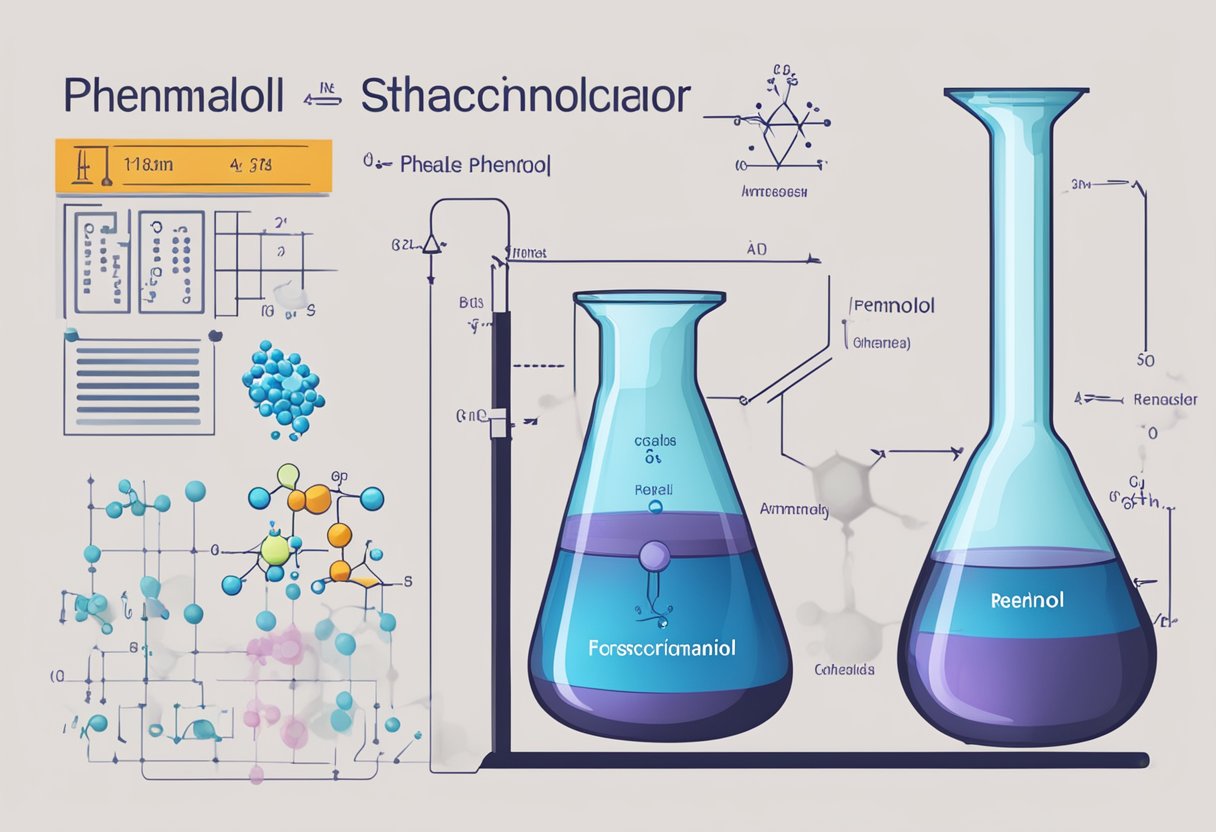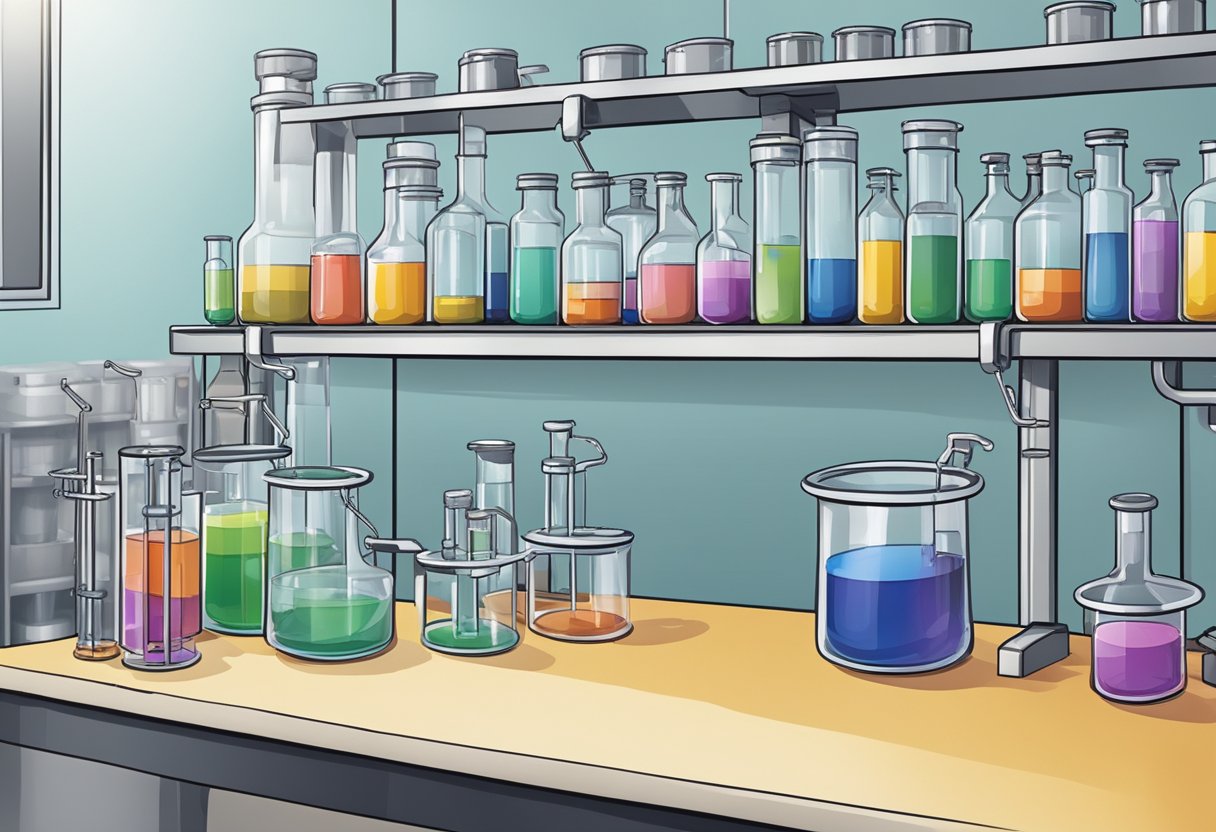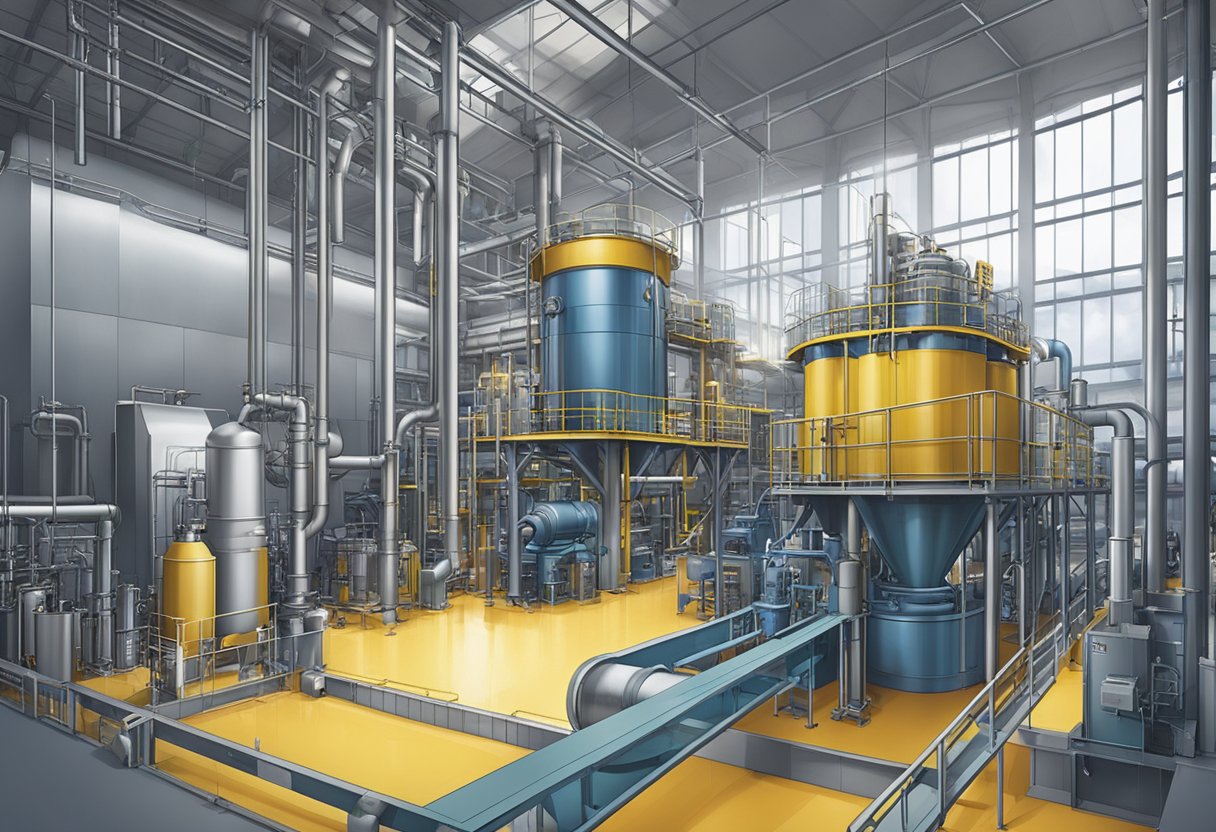Phenol Resorcinol Formaldehyde: Properties and Applications
20/01/2024
Phenol resorcinol formaldehyde (PRF) is a type of adhesive that is commonly used in the construction industry. It is a two-part adhesive that is made up of a liquid resin and a powdered hardener. When mixed together, the resin and hardener create a strong, durable bond that is resistant to water, heat, and chemicals.

PRF is often used in the construction of wooden structures, such as bridges, buildings, and boats. It is particularly useful in applications where the wood will be exposed to moisture or other harsh environmental conditions. PRF is also used in the manufacturing of plywood, where it is used to bond the layers of wood together.
One of the benefits of using PRF is its ability to create a strong bond without the need for clamping or other mechanical fasteners. This makes it a popular choice for applications where clamping or other fastening methods may not be practical. Additionally, PRF is known for its resistance to creep, which is the gradual deformation of a material under constant load. This makes it a reliable choice for long-term structural applications.
Chemical Composition of Phenol Resorcinol Formaldehyde

Phenol resorcinol formaldehyde, also known as PRF, is a type of thermosetting adhesive that is commonly used in wood bonding applications. It is made up of three primary chemicals: phenol, resorcinol, and formaldehyde.
Phenol, also known as carbolic acid, is a colorless crystalline solid that is soluble in water and alcohol. It is a common ingredient in many industrial products, including plastics, resins, and adhesives. In PRF, phenol acts as a cross-linking agent, helping to bind the other chemicals together.
Resorcinol is a white crystalline solid that is also soluble in water and alcohol. It is commonly used in the production of dyes, pharmaceuticals, and adhesives. In PRF, resorcinol acts as a curing agent, helping to harden the adhesive and make it more durable.
Formaldehyde is a colorless gas that is highly reactive and toxic in high concentrations. It is commonly used in the production of plastics, resins, and adhesives. In PRF, formaldehyde acts as a cross-linking agent, helping to bind the other chemicals together and create a strong, durable bond.
Overall, the chemical composition of PRF is carefully balanced to create an adhesive that is strong, durable, and resistant to moisture and other environmental factors. When applied correctly, PRF can create a bond that is stronger than the wood itself, making it an ideal choice for many wood bonding applications.
Properties of Phenol Resorcinol Formaldehyde Adhesives

Phenol resorcinol formaldehyde (PRF) adhesives are a type of thermosetting adhesive that are widely used in the wood industry due to their exceptional properties. The following subsections highlight some of the key properties of PRF adhesives.
Thermal Stability
PRF adhesives exhibit excellent thermal stability, making them suitable for use in high temperature environments. They have a glass transition temperature (Tg) of around 140°C, which means that they remain stable and do not soften or melt at temperatures up to this point. This property makes PRF adhesives ideal for use in applications such as laminated beams, where high temperature resistance is required.
Mechanical Strength
PRF adhesives are known for their exceptional mechanical strength. They have a high modulus of elasticity, which means that they can withstand large amounts of stress without breaking or deforming. This property makes PRF adhesives ideal for use in load-bearing applications such as structural beams, trusses, and columns.
Water Resistance
PRF adhesives are highly water-resistant, making them ideal for use in outdoor applications where exposure to water is likely. They have a low water absorption rate, which means that they do not swell or weaken when exposed to moisture. This property makes PRF adhesives ideal for use in applications such as boat building, outdoor furniture, and exterior construction.
In summary, PRF adhesives are a versatile and high-performance adhesive that offer exceptional thermal stability, mechanical strength, and water resistance. These properties make them ideal for use in a wide range of applications in the wood industry.
Production Process of Phenol Resorcinol Formaldehyde

Phenol resorcinol formaldehyde (PRF) is a type of adhesive that is widely used in the wood industry. The production process of PRF involves several steps, which are described below.
Preparation of Raw Materials
The first step in the production of PRF is the preparation of raw materials. Phenol, resorcinol, and formaldehyde are the main raw materials used in the production process. These materials are usually obtained from petrochemical sources.
Mixing of Raw Materials
The next step is the mixing of the raw materials. The raw materials are mixed in a reactor vessel under controlled conditions of temperature, pressure, and pH. The mixing process is carried out in the presence of a catalyst, which helps to promote the reaction between the raw materials.
Polymerization
The mixing of the raw materials leads to the formation of a polymer. The polymerization process is carried out under controlled conditions of temperature and pressure. The polymerization process can take several hours to complete.
Drying and Curing
Once the polymerization process is complete, the PRF adhesive is dried and cured. The drying process involves the removal of excess moisture from the adhesive. The curing process involves the application of heat and pressure to the adhesive. The curing process helps to improve the strength and durability of the adhesive.
In conclusion, the production process of PRF involves several steps, including the preparation of raw materials, mixing of raw materials, polymerization, and drying and curing. The production process is carried out under controlled conditions of temperature, pressure, and pH to ensure consistent quality and performance of the adhesive.
Applications of Phenol Resorcinol Formaldehyde

Phenol Resorcinol Formaldehyde (PRF) is a high-performance adhesive that is widely used in various industries. PRF is a thermosetting adhesive that provides excellent bonding strength and durability. Here are some of the applications of PRF in different industries.
Woodworking Industry
PRF is widely used in the woodworking industry for bonding structural and non-structural wood products. It is commonly used in manufacturing of laminated beams, glulam, plywood, and other engineered wood products. PRF provides excellent bonding strength and resistance to moisture, heat, and chemicals, making it an ideal adhesive for wood products that are exposed to harsh environments.
Aerospace Engineering
PRF is also used in the aerospace industry for bonding structural components of aircraft. It is used to bond composite materials, such as carbon fiber, Kevlar, and fiberglass, which are commonly used in aircraft structures. PRF provides excellent bonding strength and durability, making it an ideal adhesive for aerospace applications.
Automotive Manufacturing
PRF is also used in the automotive industry for bonding structural components of vehicles. It is commonly used to bond metal and composite materials, such as carbon fiber, which are used in the manufacturing of vehicles. PRF provides excellent bonding strength and durability, making it an ideal adhesive for automotive applications.
In summary, PRF is a versatile adhesive that provides excellent bonding strength and durability, making it an ideal adhesive for various industries. Its applications in the woodworking, aerospace, and automotive industries are just a few examples of its wide range of uses.
Health and Safety Considerations
Handling Guidelines
Phenol resorcinol formaldehyde (PRF) is a strong adhesive used in the construction industry. It is important to handle PRF with care and take necessary precautions to avoid any accidents.
When handling PRF, it is recommended to use protective equipment such as gloves, goggles, and a respirator. The adhesive should be stored in a cool, dry place and away from any sources of ignition. It is also important to follow the manufacturer’s instructions for use and disposal.
Toxicity and Exposure Risks
PRF contains phenol and formaldehyde, which are known to be toxic and can cause irritation to the skin, eyes, and respiratory system. Exposure to PRF can occur through inhalation, ingestion, or skin contact.
Long-term exposure to PRF can cause respiratory problems, such as asthma and bronchitis, as well as skin irritation and allergic reactions. It is important to avoid excessive exposure to PRF and take necessary precautions to ensure safety.
In conclusion, handling and using PRF requires careful consideration of the potential risks and hazards. By following proper handling guidelines and taking necessary safety precautions, the risks associated with PRF can be minimized.
Environmental Impact and Sustainability
Phenol resorcinol formaldehyde (PRF) is a type of adhesive that is commonly used in the construction industry. While PRF has a number of benefits, including its high strength and durability, it also has a number of environmental impacts that should be considered.
One of the main concerns with PRF is that it contains formaldehyde, which is a known carcinogen. When PRF is used in construction, it can release formaldehyde into the air, which can be harmful to human health. However, there are regulations in place that limit the amount of formaldehyde that can be released from PRF, and many manufacturers have developed low-emitting formulations of the adhesive.
In addition to the health concerns associated with formaldehyde, the production of PRF also has environmental impacts. The production process requires the use of phenol and resorcinol, which are both derived from fossil fuels. This means that the production of PRF contributes to greenhouse gas emissions and other environmental impacts associated with the extraction and use of fossil fuels.
Despite these concerns, PRF can be a sustainable option for construction projects when used responsibly. By choosing low-emitting formulations and using PRF in moderation, builders can minimize the environmental impacts of the adhesive while still taking advantage of its many benefits. Additionally, some manufacturers are exploring alternative, more sustainable sources of phenol and resorcinol, which could further improve the sustainability of PRF in the future.
Regulatory Standards and Compliance
Phenol resorcinol formaldehyde (PRF) is a type of adhesive that is commonly used in the construction industry. As with all chemical products, PRF is subject to regulatory standards and compliance requirements to ensure that it is safe for use.
In the United States, PRF is regulated by the Environmental Protection Agency (EPA) under the Toxic Substances Control Act (TSCA). The TSCA requires that all chemical substances, including PRF, be tested for potential health and environmental hazards before they can be manufactured or imported into the country. PRF has been extensively tested and has been found to be safe for use in construction applications.
In addition to federal regulations, PRF is also subject to state and local regulations. These regulations can vary depending on the location and intended use of the adhesive. It is important for manufacturers and users of PRF to be aware of these regulations and to ensure that they are in compliance with all applicable laws.
To ensure compliance with regulatory standards, PRF manufacturers typically have quality control procedures in place to ensure that their products meet all safety and environmental requirements. These procedures may include testing of raw materials, monitoring of production processes, and testing of finished products.
Overall, PRF is a safe and effective adhesive that is widely used in the construction industry. By adhering to regulatory standards and compliance requirements, manufacturers and users can ensure that PRF is used safely and responsibly.
Future Trends in Phenol Resorcinol Formaldehyde Technology
Phenol resorcinol formaldehyde (PRF) is a popular adhesive used in construction, aerospace, and automotive industries due to its excellent fire resistance and durability. As technology advances, there are several future trends in PRF technology that are expected to improve its performance and expand its applications.
One trend is the development of bio-based PRF adhesives. With increasing concerns about sustainability and environmental impact, researchers are exploring the use of natural materials such as lignin and tannin as substitutes for phenol and formaldehyde. These bio-based adhesives have shown promising results in terms of mechanical properties and fire resistance, making them a viable alternative to traditional PRF adhesives.
Another trend is the use of nanotechnology to enhance the properties of PRF adhesives. By incorporating nanoparticles such as carbon nanotubes and graphene oxide, researchers have been able to improve the thermal and mechanical properties of PRF adhesives. These enhancements could lead to the development of lighter and stronger materials for use in high-performance applications.
Furthermore, the development of smart PRF adhesives is another future trend. These adhesives can sense changes in temperature, humidity, and other environmental factors and adjust their properties accordingly. This could be particularly useful in aerospace and automotive industries where materials are exposed to extreme conditions.
In conclusion, the future of PRF technology looks promising with the development of bio-based adhesives, nanotechnology, and smart adhesives. These advancements are expected to improve the performance and expand the applications of PRF adhesives in various industries.




